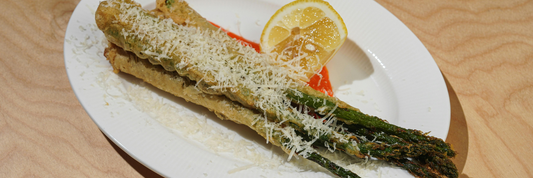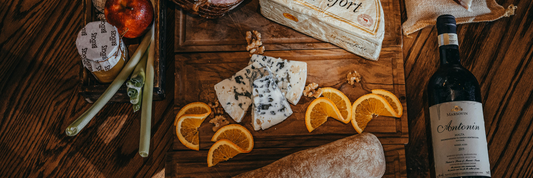For small ramen shop owners, every square foot of the kitchen is valuable real estate. During the rush of lunchtime orders, an extra step between the prep table and the noodle station can mean slower service, long waiting lines, and stressed staff. The challenge? Making a small kitchen work like a big one.
That’s where smart design and sustainable thinking come together. Kimecopak, a trusted provider of eco-friendly packaging for the F&B industry, understands how an efficient layout not only improves speed and safety but also helps restaurants integrate sustainable workflows seamlessly, from cooking to packaging to service.
-
Winter Operations Optimization: Keep Your Ramen Hot Without Losing Flavor
-
How to Accurately Calculate Food Cost per Sushi Roll to Maintain Sustainable Profit
-
Ramen Shop Checklist: Everything You Need Before Opening in Canada
Why Kitchen Layout Matters in a Ramen Shop

Running a busy ramen shop with a compact kitchen means every step, shelf, pot, and station impacts the speed of service, food quality, and overall guest experience. For businesses focused on sustainability, Kimecopak helps integrate eco-friendly packaging into the workflow, ensuring efficiency and environmental responsibility go hand-in-hand.
Unique Challenges of a Small Ramen Kitchen
-
Limited space makes equipment placement and staff movement challenging.
-
High volume during peak hours requires minimal travel between prep → cook → plating.
-
Ramen involves multiple preparation steps: broth, noodles, toppings, plating—inefficient layouts create bottlenecks.
-
Seamless communication between kitchen and service counters is essential.
-
Compliance with hygiene, safety, and sustainable practices requires smart storage, waste management, and packaging placement.
How an Efficient Layout Boosts Speed, Quality, and Sustainability
-
Shorter travel distances = faster order completion.
-
Clear workflow minimizes errors and ensures consistent quality.
-
Proper placement of sustainable packaging (e.g., Kimecopak’s eco-friendly containers) reduces handling time for takeout orders.
-
Smart layout reduces energy usage and waste while improving professionalism.
Key Principles for an Efficient Small Ramen Kitchen Layout

Define Zones – Prep, Cook, Plating, Washing
Segment the kitchen into clear zones: prep, cooking, plating/packaging, and washing. This reduces overlaps, prevents collisions, and ensures smooth workflow.
Applying the “Golden Triangle” Concept in Tight Spaces
The classic work triangle (sink–stove–refrigerator) can be adapted for commercial kitchens.
-
Place storage close to prep areas.
-
Position cooking stations near plating.
-
Separate washing/dish areas to avoid intersecting the main workflow.
Goal: minimize unnecessary steps and movement.
Choosing the Right Layout Type for Limited Space
Layouts include galley, assembly line, island, and open plan. For small ramen kitchens:
-
Galley Layout: two rows facing each other, ideal for narrow spaces.
-
Assembly Line Layout: linear flow from raw ingredients → cooking → plating, perfect for specialized menus like ramen.
Choosing the right type maximizes both space and efficiency.
Step-by-Step Checklist to Optimize Your Small Kitchen Layout
| Step | Action |
|---|---|
| 1 – Map Your Menu & Workflow | List all steps: ingredient prep → broth → noodle cooking → toppings → plating/packaging. Assign each step a location. |
| 2 – Position Equipment by Frequency of Use | Frequently used items (broth pot, noodle cooker) near the main workflow. Rarely used items go to the sides. |
| 3 – Optimize Storage & Shelving | Use vertical space with tall shelves or hanging racks. Apply FIFO for perishable ingredients. |
| 4 – Design for Staff Movement & Safety | Ensure 90–100 cm clear paths for two people. Avoid doors or equipment blocking main flow. |
| 5 – Integrate Sustainable Practices, Including Packaging | Place eco-friendly packaging stations (like Kimecopak containers) near plating for easy access and fast takeaway preparation. |
Common Pitfalls vs. Efficient Layout Solutions
| Pitfall | Efficient Solution |
|---|---|
| Random equipment placement → blocked pathways | Follow a workflow-based zone layout |
| Storage far from prep areas | Place storage close to prep zones |
| Narrow aisles → collisions | Keep aisles ≥90 cm, avoid blocking equipment |
| Takeaway packaging far away | Place packaging near plating for easy access |
| Too many decorative islands | Prioritize function over aesthetics for speed |
Real-Life Example: Layout for a 50-Seat Ramen Shop

Floor Plan and Zone Allocation
For a 6 m x 4.5 m kitchen (~27 m²):
-
Left wall: dry storage + refrigerator.
-
Opposite wall: prep table + small sink.
-
Center: main workflow from storage → prep → cooking → plating.
-
Back: broth pots, noodle cooker, plating/packaging table.
-
Near service exit: Kimecopak eco-friendly packaging station.
-
Dishwashing area: back corner, away from main workflow.
Equipment and Station List
-
Large upright refrigerator + dry storage shelves
-
Stainless steel prep table + hand-washing sink + prep sink
-
Broth pots with ventilation
-
Noodle cooking station + topping station
-
Plating/packaging table
-
Eco-friendly packaging rack (Kimecopak)
-
Dishwashing sink
-
1 m clear aisle between main zones
Why Eco-Friendly Packaging from Kimecopak Matters

Optimizing Packaging Workflow in a Compact Kitchen
Takeaway orders are increasingly common. Packaging far from the main workflow slows down service. Using Kimecopak’s sustainable packaging (paper boxes, PLA containers, kraft bags) efficiently placed near plating ensures fast, eco-friendly takeout.
Tips for Seamlessly Integrating Sustainable Packaging
-
Keep packaging at waist height near plating for quick access.
-
Standardize packaging sizes to simplify stacking and retrieval.
-
Separate waste/recycling zones within the kitchen for efficiency and sustainability.
-
Label packaging with eco-friendly reminders for staff and visibility to customers.
FAQ
Q1: How much space is needed to optimize a small ramen kitchen layout?
A: It depends on menu, staff, and guest volume. Under ~30 m², galley or assembly line layouts are preferred.
Q2: What if the work triangle isn’t feasible due to space constraints?
A: Focus on minimizing travel between main stations: storage → prep → cooking → plating. The triangle can become a simple linear workflow.
Q3: How to prevent packaging from slowing down kitchen workflow?
A: Place packaging near plating, with racks easily accessible. Organize by type and quantity, and use user-friendly eco-friendly options.
Q4: Which layout suits a ramen shop mainly serving takeout?
A: An assembly line layout works best: ingredient prep → cooking → packaging near exit for fast service.
Conclusion
Optimizing a small ramen kitchen layout is about more than equipment placement—it’s designing a seamless workflow from storage to prep, cooking, and plating/packaging. Combining smart workflow with Kimecopak’s sustainable packaging creates a professional, efficient, and eco-conscious operation.
Immediate Actions:
-
Draw your current kitchen layout.
-
Identify bottlenecks: excessive travel, blocked paths, distant packaging.
-
Implement three simple changes: relocate packaging, move prep table, clear aisles.
-
Track order completion times and evaluate improvements.
By streamlining your kitchen and integrating sustainable practices, you boost both efficiency and brand credibility, aligning perfectly with Kimecopak’s mission: providing trusted, eco-friendly solutions for F&B businesses.




